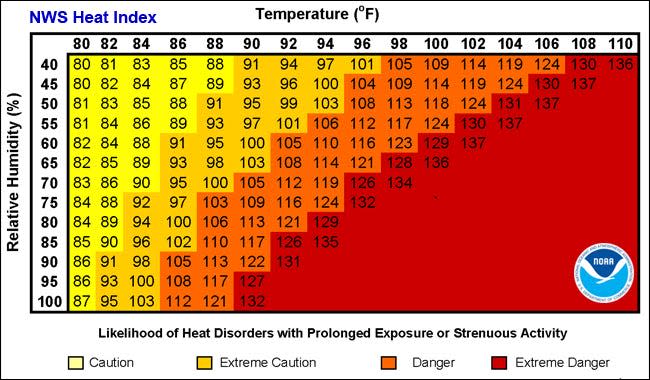What is heat index? How hot does it really feel outside? Use this chart to find out
The temperature on any given summer day may be in the 80s or 90s. So why does it feel so much hotter and oppressive at times?
That's the heat index doing its thing. Here's how it works:
What is the heat index?
The National Weather Service describes the heat index using the time-worn saying, "It's not the heat, it's the humidity."
The heat index is a measure of how hot it feels, and it could be 20 to 30 degrees higher than the temperature on the thermometer.
The heat index is a factor of air temperature and humidity, according to the NWS. The more humid it is, the harder it is for a person's sweat to evaporate. That means the body's cooling systems works less effectively, making that person feel hotter.

Heat index chart and calculator
To find the heat index temperature, the NWS has a chart and offers an online calculator.
The chart is a grid where you can find the heat index temperature by looking at the air temperature and relative humidity. For example, the NWS says if it's 96 outside and the humidity is 65%, the heat index temperature is 121 degrees. That falls in the orange zone of the chart, indicating a dangerous temperature. The red areas, especially the ones without numbers, indicate extreme danger, according to the NWS.
It's hot: How to prevent heat stroke, heat exhaustion
And the values in the chart are for shady locations. Direct sunlight can increase the heat index temperature by up to 15 degrees, according to the NWS.
With the online calculator, you can enter the temperature and either the relative humidity or the dew point to calculate the heat index temperature.
This article originally appeared on Record-Courier: Use the heat index chart, calculator to know how hot it really feels

